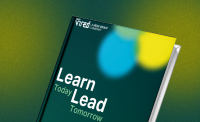Now as the distinction between the product development process and product management is pretty clear, it is crucial to learn about the six stages of new product development. All six stages are described below in detail:
Ideation
This is the initial phase where innovative ideas for a brand-new product or enhancement of an existing product are generated. The main aim of this phase is the generation of potential ideas that will meet the need of the market.
How It Involves Generating Ideas for New Products?
The ideation phase generates innovative ideas for new products in the following ways:
- Brainstorming
- Customer feedback
- Market research
- Internal idea generation
- Observing market trends and innovations
- Cros-functional and collaboration team
Factors Influencing Idea Generation
Various factors influence the idea generation for the new product development process that can shape the quality, quantity, and diversity of the ideas; these are:

- Understanding the market preferences and needs of the customers.
- The organization’s culture, too, plays a crucial role as a supportive and open culture will enhance creativity and the generation of new and innovative ideas.
- Collaboration among various departments is also crucial for enhancing ideas in the new product development process.
- The availability of technology and resources also impact the feasibility and scope of idea generation.
- External factors like market competition, sociocultural factors, and trends in the industry also serve as potential factors influencing idea generation for the product development process.
Concept Development
Once idea generation is completed, the next phase is the development of these ideas into concrete concepts. This includes defining the product’s target market, benefits, and features. The refinement and evaluation of the concepts are initiated in this stage to ensure their potential for success and feasibility.
Techniques for Refining and Developing the Product Concept
Developing and refining the product concept is also a crucial step in the new product development process; the various techniques are as follows.
- Concept testing
- Market research
- Prototyping
- Concept refinement workshop
- Competitive analysis
- Value proposition design
- Iteration and feedback
- Business case development
Ways to Test and Validate the Product Concept
Testing and validating the product concept is a product development strategy that benefits numerous businesses. The ways to validate and test the product concept are:
- Questionnaires and Surveys
- Focus groups
- User testing and prototyping
- Preorders and landing pages
- Feedback and opinions from experts
- Presales and crowdfunding
- Beta testing and pilot programs
- Competitive analysis
Design and Prototyping
In this stage, among all the other stages of new product development, the prototyping and detailed design of the product takes place. Functional prototypes, visual representation, and specifications are created by the design team that helps enhance the product’s functionality, user experience, and aesthetics.
Read here to know the top Product Manager Skills
Best Practices for Designing the Product
A multidisciplinary approach is required to design a product that will meet all user needs. Here are the best practices that one must consider while designing a product.
- User-centric designs
- Iterative design process
- Intuitive and simple design
- Branding and visual appeal
- Usability and functionality
- Cost of manufacture
- Impact on Environment and Sustainability
- Safety and Compliance
- Testing and prototyping
Importance of Prototyping
Prototyping plays a vital role in the new product development process and comes with numerous benefits, which are listed below:
- Communicating and visualizing
- Collecting feedback from the user
- Testing and validating concepts
- Early identification and resolution of issues
- Enhances decision-making
- Minimizing cost and risks
Testing and Validation
The stage of testing and validation in the new product development process evaluates the performance and quality of the product as well as its acceptance in the market. This is useful for making necessary improvements and validating the product’s viability.
Importance of Testing
The key reasons behind the importance of testing are:
- Assurance of quality
- Customer satisfaction
- Optimization of performance
- Validation of the requirements
- Cost savings
- Competitive advantage
Techniques for User Testing and Feedback Collection
To gather valuable insights, testing, and collection of feedback are essential; some techniques are as follows:
- Interviews
- Questionnaires and surveys
- Usability testing focus groups
- Click tracking and heat maps
- Beta testing
- A/B testing
- User analysis
- Social media listening
You can learn more about Production Management here.
Launch
After refinement and validation of the product, it is now ready for launch. This stage in the new product development process includes setting the price, planning distribution channels, developing marketing materials, planning distribution channels, and creating awareness campaigns. The aim is to foster the interest of the customers.
Tips for Planning and Executing a Successful Product Launch

Strategic thinking and careful preparation are essential for ensuring a successful product launch. Some tips that might help in the process are:
- Defining goals clearly
- Understanding the target audience
- Developing a compelling value proposition
- Developing a comprehensive plan for the launch
- Build anticipation
- Develop a solid marketing strategy
- Prepare the sales team
- Plan a memorable event for the launch
- Ensure exceptional customer support
Strategies for promoting and marketing the product
Promotion and marketing of the product are equally important; you can adopt the following strategies for this:
- Effectively promoting and marketing the product
- Defining the target audience
- Content marketing
- SEO
- Paid advertising
- Public relations
- Referral and loyalty programs
- Collaboration and partnership
Commercialization
The final stage of New Product Development Process is commercialization. This includes executing marketing and sales strategies, establishing distribution networks, and scaling production.
Although interconnected, the product development process and management are two distinct aspects. While product development refers to the procedure of creating a new product or refining an existing product, product management revolves around strategic planning, marketing, and management of the product throughout its presence in the market.
| Difference |
Product Development |
Product Management |
| Focus |
Creating and building the product |
Defining and guiding the product strategy |
| Responsibility |
Execution of product design and engineering |
Ownership of product lifecycle and market success |
| Role |
Engineers, designers, and developers |
Product managers, strategists, and marketers |
| Activities |
Designing, coding, testing, and iterating on the product |
Market research, roadmap planning, feature prioritization |
| Scope |
Technical implementation and feature development |
Overall product strategy, market positioning, and business goals |
| User Feedback |
Incorporates user feedback into product improvements |
Gathers and analyzes user feedback to guide product decisions |
| Cross-functional Collaboration |
Collaborates closely with development teams |
Collaborates with various stakeholders across marketing, sales, and development |
| Timeframe |
Focused on the product development lifecycle |
Focused on the entire product lifecycle from ideation to retirement |
| Skills |
Strong technical skills and problem-solving abilities |
Strong market analysis, communication, and strategic planning skills |
| Success Metrics |
Successful product delivery and technical execution |
Market adoption, customer satisfaction, and revenue growth |
To know about the Difference Between Production and Operations Management in details look here.
Look here to learn about the scope of production management. Let’s look into the stages of New Product Development Process in detail.










